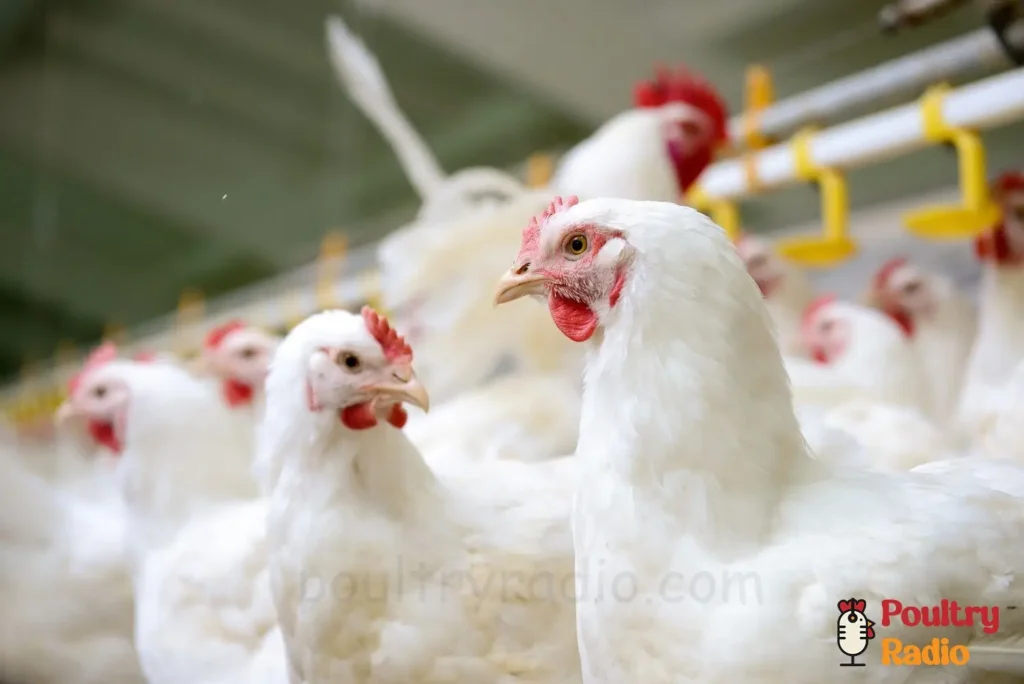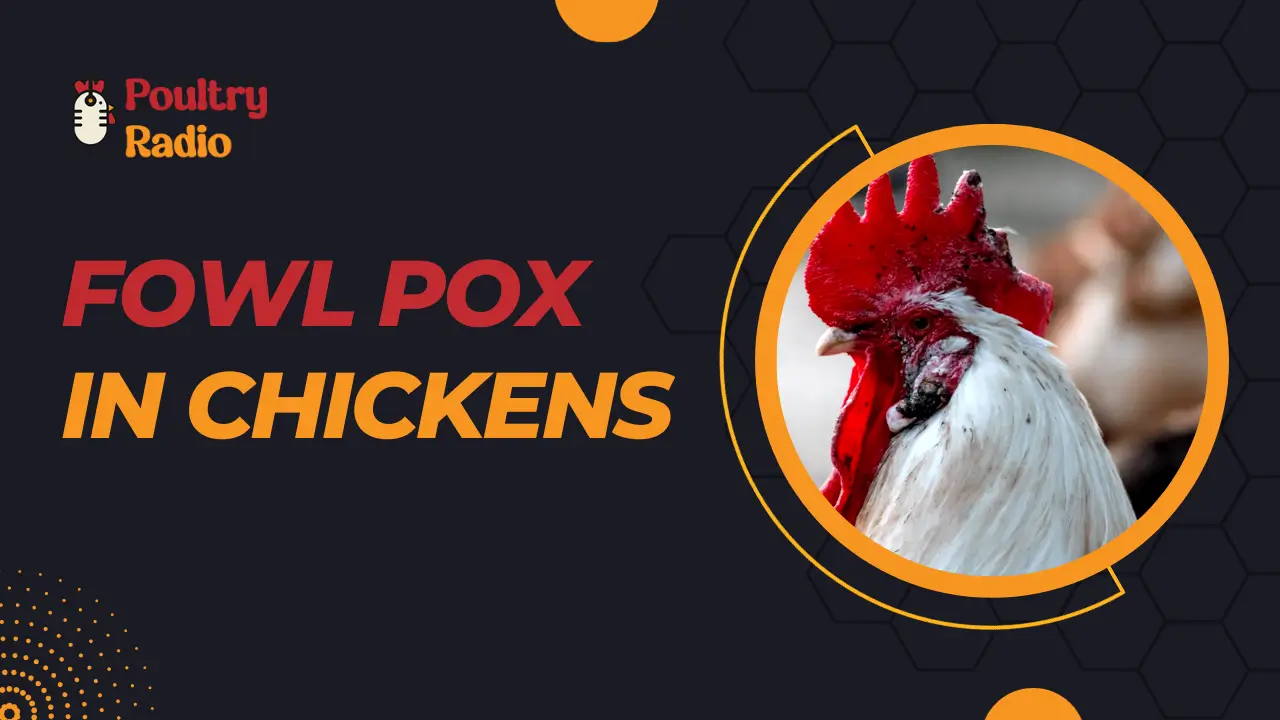Fowl Pox Panic? The Viral Solution for Keeping Your Flock Healthy!
Fowl pox is a slow-separating viral infection that affects chickens, turkeys, and many other birds. It causes cutaneous lesions on the head, neck, legs, and feet that aren’t feathered and diphtheritic lesions in the upper digestive and respiratory tracts.

Fowl Pox Virus
The fowl pox virus is the causative agent of fowl pox and belongs to the Avipoxvirus genus in the Poxviridae family.
Structure:
Avipoxviruses boast intricate, multi-layered viral particles. The brick-shaped capsid is approximately 330 × 280 × 200 nm in size and is surrounded by one or more membranes that encase a biconcave core. This core houses the genome in a nucleoprotein complex.
Replication:
When entering a host cell, the virus attaches to glycosaminoglycan receptors on the cell surface.
Similar to other poxviruses, the fowl pox virus reproduces within the cytoplasm. Avian poxviruses create extracellular enveloped viruses by directly releasing mature virions through the plasma membrane.
Pathogenic mechanisms:
The large DNA virus found in fowlpox lesions (belonging to the Poxviridae family) can withstand normal conditions and might remain viable for long periods in dried scabs. Photolyase and A-type inclusion body protein genes within the fowlpox virus genome seem to shield the virus from environmental threats.
Avian poxviruses might be contained within inclusion bodies.
Epidemiology of Fowl Pox
Incubation Period:
Chickens and turkeys usually show signs of fowl pox infection within 4 to 10 days after exposure.
Morbidity and mortality:
Cutaneous infections typically lead to low or moderate mortality rates and affected flocks usually resume normal production after recovering. Mortality rates tend to be high in cases of diphtheritic or systemic infections caused by certain aggressive strains.
Geographic distribution:
The Virus can be found all around the world.
Host Range:
Fowl pox virus primarily affects chickens and turkeys, and there have been instances of it affecting ducks, geese, pheasants, quail, canaries, and hawks. Mammals are not prone to natural infection by the fowlpox virus or any other avipoxviruses.
Transmission:
The virus is typically spread through contact with cuts or scrapes on the skin.
The shedding of skin lesions (scabs) from recovering birds in poultry houses can lead to aerosol exposure for susceptible birds. Mosquitoes and other biting insects can also act as carriers. If mosquitoes are abundant, the disease can spread quickly within a susceptible flock. The virus persists for long periods in poultry complexes with birds of different ages due to its slow spread and the presence of susceptible birds.
Forms & Symptoms of Fowl Pox in Chickens
Fowl pox is a contagious disease but generally has a low mortality rate. There are two forms of the virus:

Cutaneous Form (Dry Pox)
This form primarily affects infected bird’s skin and feather follicles.
Symptoms include the development of small, raised, wart-like lesions (pox nodules) on the unfathered areas of the bird’s body, such as the comb, wattles, face, legs, and sometimes the vent area.
As they recover, these lesions may develop encrustations and scabs, and eventually fall off. Because it doesn’t affect mucous membranes, this kind is frequently called “dry pox.”
Diphtheritic form (Wet Pox)
In the diphtheritic form, lesions appear on the mucous membranes of the mouth, esophagus, pharynx, larynx, or trachea (referred to as wetpox or fowl diphtheria). Sometimes, the sores mainly develop in one or more of these areas.
Low to moderate mortality is frequently caused by malnutrition, dehydration, and breathing difficulties.
Mucous membranes with elevated, buff to yellow plaques are known as diphtheritic lesions. Although they can also be found in the sinuses, nasal cavity, conjunctiva, pharynx, larynx, trachea, or esophagus, they typically occur in the mouth. Though they may happen on their own, diphtheritic lesions can sometimes arise in birds.
Mouth lesions make eating difficult.
Tracheal issues can make it hard for chickens to breathe. When chickens have laryngeal and tracheal lesions, it’s important to distinguish them from those caused by infectious laryngotracheitis, which is a result of a herpesvirus that forms intranuclear inclusions.
When infected with highly virulent fowl pox virus strains, birds may develop lesions in their internal organs. A single bird could experience more than one form of the disease, such as cutaneous, diphtheritic, or systemic.
Prevention and Control
To effectively protect birds from viruses, prevention is crucial as there is currently no specific treatment. Vaccination is the best approach for controlling the disease.
- Hens, turkeys, pigeons, canaries, and quail can all be protected from pox through vaccinations. Birds generally get vaccinated at 4 weeks of age, however, this can be changed if necessary. One to two months before the start of production, the vaccination of the pullets is recommended. There are vaccines on the market that are both inactivated and live attenuated.
- The spread of the virus can be restricted by reducing the mosquito population near chicken farms.
- Strict biosecurity procedures, such as cleaning equipment and restricting access to the poultry facility, can help stop the spread of the virus.
Zoonotic Risk
Fowl pox is not a significant zoonotic risk, there have been some reports of mild human infections with avian poxviruses, including the strains that cause fowl pox. In these rare cases, the virus typically causes localized skin lesions or rashes in humans who come into close contact with infected birds or contaminated materials. However, these human infections are usually self-limiting and not a major health concern.
To minimize any potential risk of contracting fowl pox or other diseases from poultry, it is essential to practice good hygiene such as washing hands, avoiding close contact, maintaining clean facilities, and implementing biosecurity measures.
Here you can read some common chicken diseases and the solutions.
Frequently Asked Questions
What is fowl pox caused by?
The fowl pox virus is the causative agent of fowl pox and belongs to the Avipoxvirus genus in the Poxviridae family.
How do you treat fowl pox in chickens?
To effectively protect birds from fowlpox virus, prevention is crucial as there is currently no specific treatment. Vaccination is the best approach for controlling the disease.
What is the Vaccine for fowl pox?
Introducing AE-Poxine®: a special combination live virus vaccine designed to protect chickens from avian encephalomyelitis and fowl pox.
Is fowl pox Airborne?
Fowl pox can be spread from bird to bird through direct contact, and the virus can also be airborne. Birds can become infected through their eyes or skin wounds, or by breathing in the virus. Despite being contagious, the disease tends to spread slowly.
Is fowl pox spread to humans?
Fowl pox is not a significant zoonotic risk, there have been some reports of mild human infections with avian poxviruses, including the strains that cause fowl pox. In these rare cases, the virus typically causes localized skin lesions or rashes in humans who come into close contact with infected birds or contaminated materials. However, these human infections are usually self-limiting and not a major health concern.








